
The incredibly versatile USB-C port has become more indispensable than ever before. Whether it's for recharging batteries or achieving lightning-fast data transfers, USB-C has become a standard, making it crucial to seek accessories that come equipped with USB-C connectivity.
Although some of the finest monitors were initially slow to adopt USB-C technology, there is now a variety of robust options available in the market. After conducting numerous monitor reviews, our top recommendation for a USB-C monitor is the budget-friendly Dell 32 USB-C Hub. However, we also offer alternatives from various brands for you to consider. If you're interested in delving deeper into USB-C, be sure to check out our FAQ below!
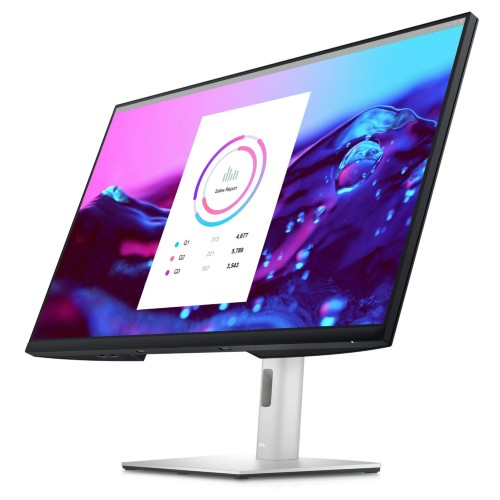


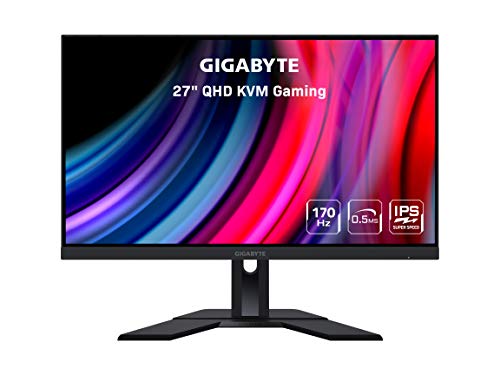
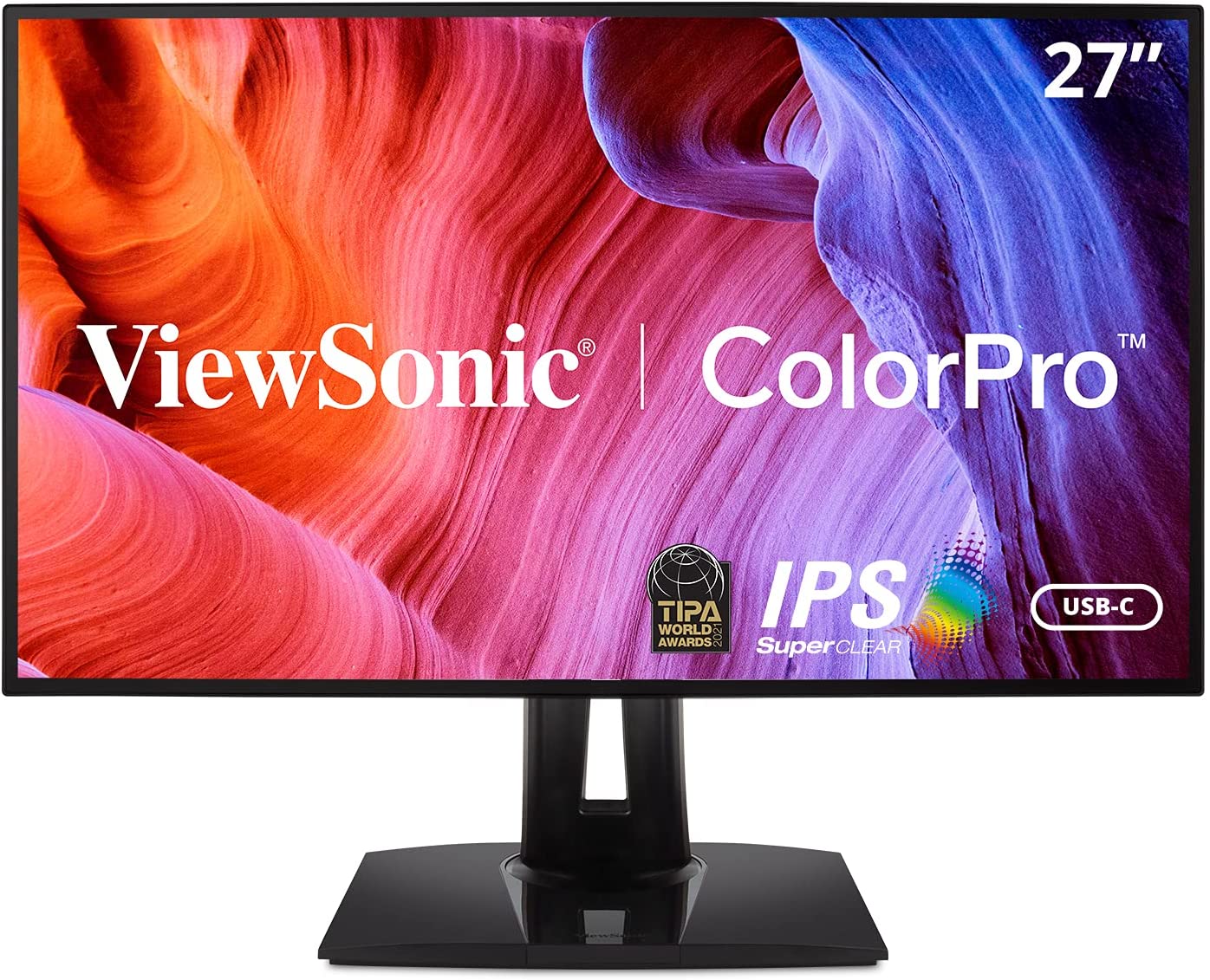
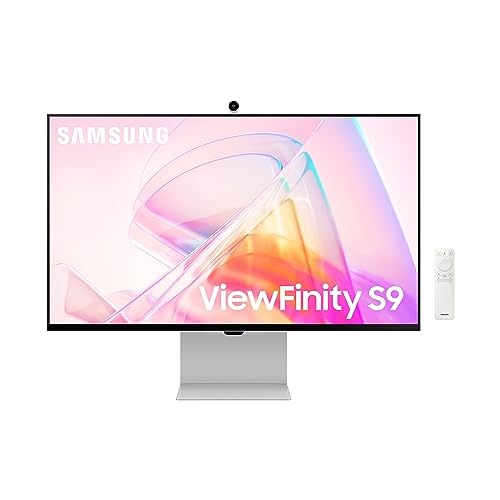
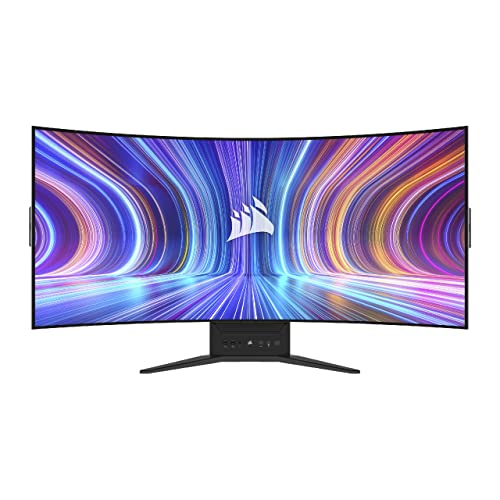
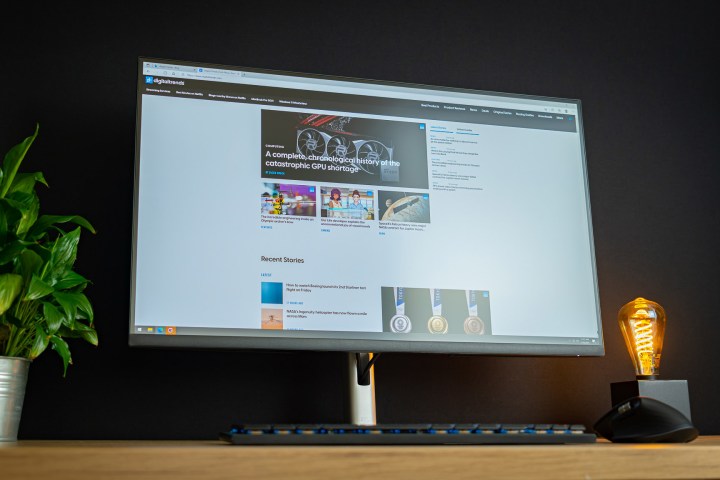
Best all-around USB-C monitor
Dell 32 4K USB-C Hub Monitor
- Excellent connectivity options
- Great IPS picture quality
- Sturdy, modern construction
- Large 4K panel
- Superb warranty
- Expensive
- No wide-gamut color space
Why you should buy this: A versatile monitor that can do it all.
Who's it for: Suitable for a wide range of users as it offers all the great features in one package.
Why we choose the Dell 32 4K USB-C Hub Monitor:
Dell's USB-C monitor has it all — a large 32-inch display size to accommodate all types of work or play, 4K resolution for extra detail, and a price more affordable than many similar monitors. But the star of the show is the USB-C built into the monitor, which includes USB-C and a variety of other ports, including HDMI, DisplayPort, Ethernet, and USB-A SuperSpeed.
The LED monitor covers 99% of the sRGB color gamut, 350 nits brightness, and includes flicker-free technology. The 120HZ refresh rate is also an excellent companion stat, although the 8ms response time is a bit high. All in all, it's a versatile USB-C monitor at home with all kinds of projects in many different spaces, making it an easy top pick.

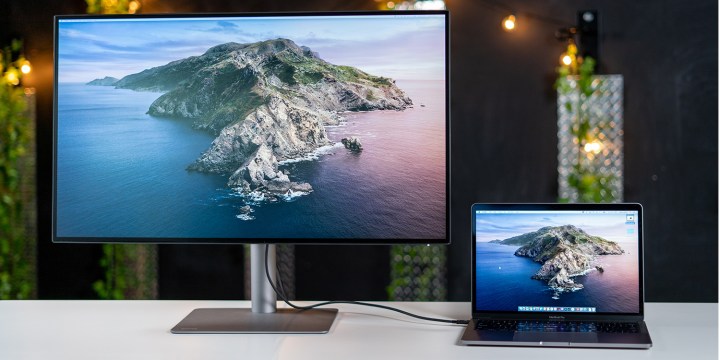
Best USB-C monitor for creatives
BenQ PD3220U
- Simple, minimalist design
- Great stand adjustments
- Accurate colors
- Easy-to-use menu
- Good port selection
- Thick cabinet
- Confusing color modes
- Expensive
Why you should buy this: Apart from being an excellent monitor for creative tasks, it also comes with a wide range of I/O ports.
Who's it for: Creative professionals looking for a premium monitor.
Why we choose the BenQ PD3220U:
This 4K, 32-inch BenQ monitor is a particularly strong option for artists and designers who need an excellent display and the latest connections — but don't want to pay anywhere near the price of something like the Apple Pro Display. There are also features to quickly switch between different types of content and multiple computers if necessary, as well as dual viewing files. Color accuracy is excellent, too, making this monitor ideal for professional editing. The display can also be moved into portrait or landscape positioning.
If you have a lot of accessories to work with, you'll be pleased to know the monitor includes two Thunderbolt 3/USB-C ports, two USB-A, a Micro USB, two HDMI, and a DisplayPort. As with all large monitors, make sure you have enough room on your desk for this model.
Note that the BenQ PD3220U is another monitor in high demand so if availability is limited, you should sign up for alerts and pre-order options to find out when new shipments come in.

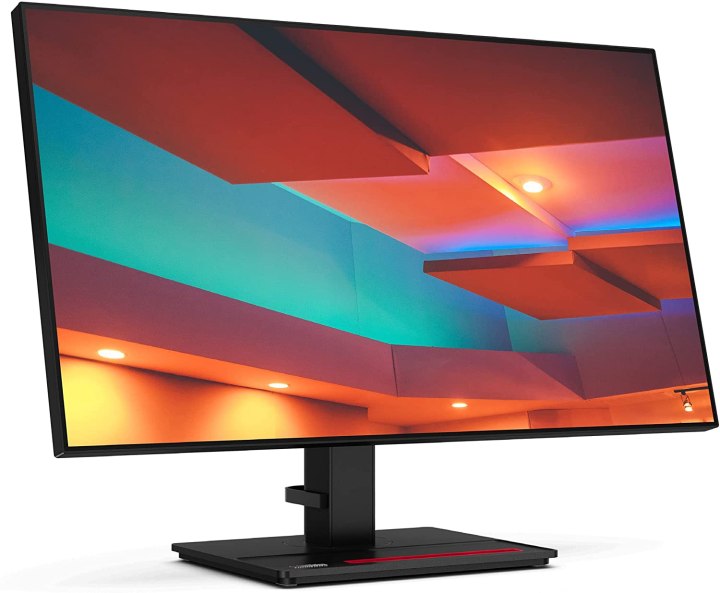
Best USB-C monitor for color accuracy
Lenovo ThinkVision P27h-20
- Excellent coverage of color gamuts
- UHD resolution
- Plenty of customization options
- Mostly benefits professionals
Why you should buy this: It offers excellent accuracy with wide color gamut coverage.
Who's it for: Those who need a monitor for creative tasks like photo or video editing.
Why we choose the Lenovo ThinkVision P27h-20:
Lenovo's 27-inch QHD monitor has great color accuracy right out of the box, with 99% sRGB and 99% BT.709 perfect for those working in visual design, photography, or video editing. The 2560 x 1440 resolution gives you plenty of screen space to work with, and the anti-glare coating makes it easy to concentrate no matter what your work situation looks like. Brightness is rated at a healthy 350 cd/m2, and many different adjustments and color profiles are available to help customize the experience just for you.
In addition to USB-C, the Lenovo ThinkVision P27h-20 comes with HDMI 1.4, DisplayPort 1.2, and a collection of USB 3.1 ports. If your home or work office needs a higher-grade monitor that can also connect to the latest cameras or mobile devices, this may be the one for you. You may also want to take a look at our favorite laptop docking stations as well.

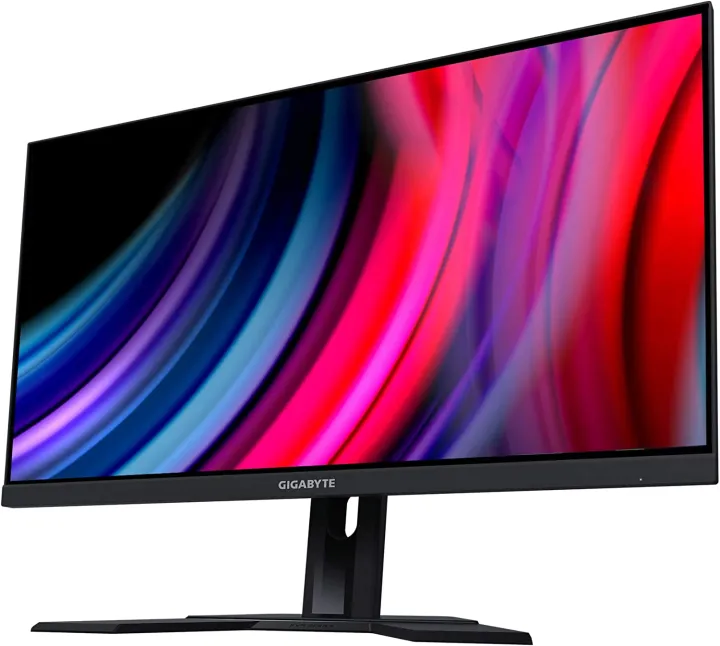
Best budget USB-C monitor for gaming
Gigabyte M27Q
- High refresh rate for gaming
- Low input lag
- Good color accuracy
- Included KVM switch
- Doesn't offer deep blacks
- Not the best with ergonomics
Why you should buy this: It is one of the best gaming monitors with USB-C and doesn't cost a fortune.
Who's it for: Gamers looking for a reliable monitor at a good price.
Why we choose the Gigabyte M27Q:
The Gigabyte M27Q stands out as an exceptional 1440p gaming monitor, especially if you are looking for one that comes with USB-C. It features an excellent 27-inch display offering an immersive gaming experience while providing ample screen real estate for productivity tasks. The monitor impresses with its remarkably low input lag, outstanding response time, and a high refresh rate of up to 170Hz, ensuring smooth and highly responsive gameplay.
Utilizing an IPS panel, it boasts wide viewing angles that facilitate content sharing and cooperative gaming, albeit at the expense of a slightly lower contrast ratio, resulting in less-than-optimal black levels in dimly lit environments. Regrettably, it lacks swivel adjustment and the ability to rotate to portrait mode. While it does support HDR, it falls short of achieving the brightness levels required for a genuine HDR experience.
On the plus side, the monitor offers a plethora of additional features, including Picture-in-Picture/Picture-by-Picture functionality, and a convenient KVM feature that allows you to control two devices using your mouse and keyboard. The USB-C port on the monitor supports DisplayPort Alt Mode, so you can connect almost any device that supports DisplayPort out.

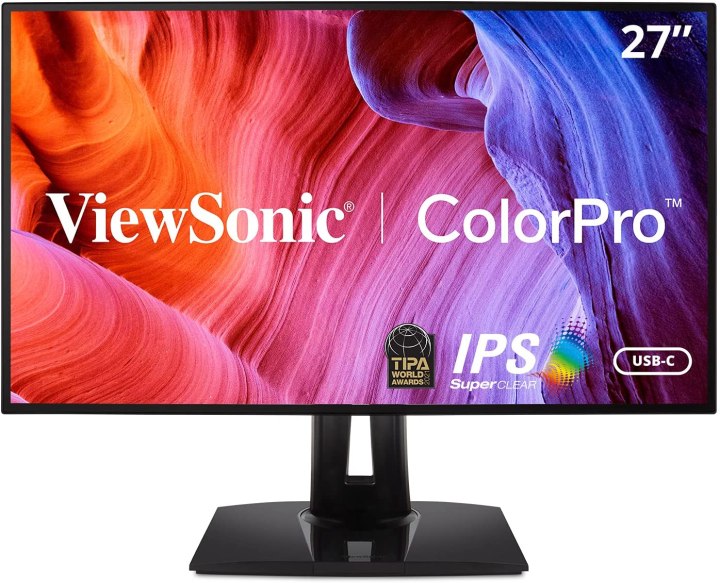
Best professional USB-C monitor
ViewSonic VP2768a ColorPro
- Very good color accuracy
- Reasonably priced
- Color blindness mode
- No 4K
Why you should buy this: An affordable USB-C monitor offering great color accuracy.
Who's it for: Photographers and other professionals looking for an affordable USB-C monitor.
Why we choose the ViewSonic VP2768a ColorPro:
This ViewSonic monitor is an excellent option for people who want a professional USB-C monitor but don’t necessarily need a full 4K screen. The monitor is 27 inches long and 1440p: It has basic calibration options and emphasizes image quality (100% sRGB and 4.39 trillion color palette), making it a terrific model for photographers.
Alternative modes for the monitor include a blue light filter and a color blindness mode that will adjust colors for common color blindness. Other connections include USB 3.1, HDMI 1.4, and DisplayPort. ViewSonic’s most significant features are its commitment to precise color accuracy and its method of helping you work during all hours of the day. If these are features that get you excited, then the ViewSonic ColorPro VP2771 might just be the ideal monitor for you.

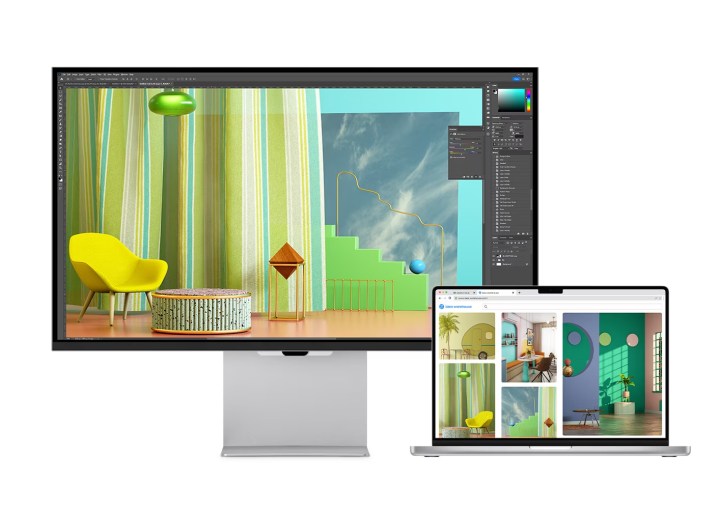
Best feature-packed USB-C monitor
Samsung ViewFinity S9
- Similar to the Apple Studio Display
- Built-in smart features
- Sleek design
- Four USB-C ports
- External power brick
Why you should buy this: Mimics the Apple Studio Display along with a variety of additional creature comforts.
Who's it for: Mac users looking for a solid multimedia experience.
Why we choose the Samsung ViewFinity S9:
Samsung showcased the ViewFinity S9 studio monitor in January at CES 2023 and it is now available for purchase at a starting price of $1,599. It is basically one of the best Apple Studio Display alternatives featuring four USB-C ports, one of which supports Thunderbolt 4.
The 27-inch panel comes with a 5K resolution along with 600 nits of brightness (HDR600 certified), support for 10-bit color, and 99% support of the DCI-P3 color gamut. The Samsung ViewFinity S9 comes packed with a range of additional features including 5W stereo speakers, a multiview (split-screen) function, and support for Samsung DeX. Moreover, it offers seamless wireless connectivity, allowing you to link the monitor to speakers, keyboards, game controllers, and other peripherals through Bluetooth, as well as stream content from compatible Apple devices using AirPlay. It even comes with a detachable camera that can be used for video calling.
Furthermore, the monitor is equipped with built-in Wi-Fi and runs on the Tizen TV OS, providing access to a variety of apps, including popular video streaming services like YouTube, Netflix, Disney+, and more. With the included remote control, you can easily navigate controls and settings for a more user-friendly experience.

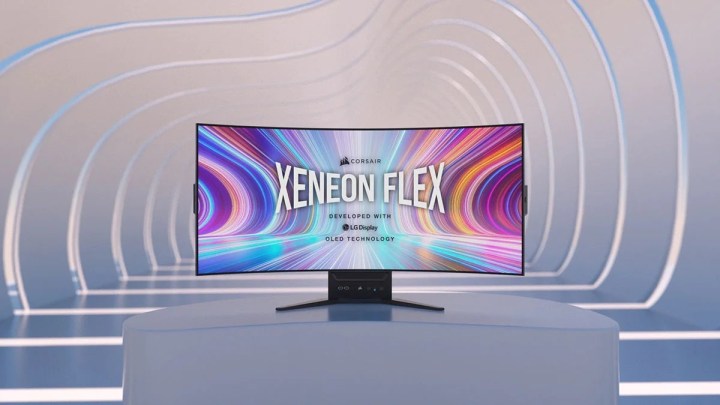
Best ultrawide USB-C monitor for gaming
Corsair Xeneon Flex 45WQHD240
- 45-inch bendable OLED screen
- 240Hz refresh rate
- Up to 1,000 nits of brightness
- Expensive
Why you should buy this: A unique ultra-wide OLED gaming monitor that transforms into a curved monitor.
Who's it for: For those who want a premium ultra-wide gaming experience.
Why we choose the Corsair Xeneon Flex 45WQHD240:
Corsair entered the gaming monitor space earlier this year and their flagship is the Xeneon Flex 45WQHD240. This unique monitor can be used as a traditional flat panel or transformed into a curved display using the two handles on its sides, creating an 800R curve. The 45-inch screen boasts a 21:9 aspect ratio and a resolution of 3440 x 1440.
Powered by an LG OLED panel, it delivers an impressive 240Hz refresh rate with minimal input lag, although the latter may increase at lower refresh rates. The panel supports FreeSync variable refresh rate and is G-Sync compatible, featuring HDMI 2.1 support as well. Users can expect vibrant colors and deep blacks with minimal blooming effects around bright objects. Moreover, it offers a KVM switch, Picture-in-Picture/Picture-by-Picture modes, along with a wide array of I/O ports.
While it comes with a premium price tag, if the flexible display feature isn't a priority, LG's UltraGear OLED 45 presents itself as an excellent alternative.

Frequently Asked Questions
It’s a computer monitor with a USB-C port. You can learn more about USB-C with our handy guide here, but it’s the latest and greatest USB style port that fixes many shortcomings of previous USB-A connections and enables the fastest data transfer rates with the newest accessories. A USB-C port will require specific USB-C cables to work properly.
In the long-term, yes. USB-C is quickly becoming the primary USB connection that devices use. New devices and accessories tend to have USB-C connections, including even some iPad Pros. So, regardless you are probably going to want USB-C capabilities eventually.
Do not be concerned if this is not a necessity for you personally right now, it is not an immediate concern for all people. If your accessories are a couple of years old, they probably don’t use USB-C. Therefore you wouldn’t get much out of a USB-C monitor, especially if you are happy with the way things are already.
Alternatively, if video connections are essential to you for a job or hobby, then upgrading to a USB-C monitor could be a necessary quality-of-life improvement.
The answer to that is simple: They are still new. The physical USB-C port is generally more expensive to purchase and install than are older USB ports. The manufacturing process has not had as long to develop properly, and the ports are only showing up on newer monitor models, which are naturally more costly than old models. That combination equals out to higher prices, at least for now. We project prices stabilizing as USB-C starts to become the ubiquitous standard.
Yes, they can. Multi-monitor setups depend on having compatible video ports. USB-C can handle video, and so as long as your PC or laptop has a USB-C output, everything should work out smoothly. You can find adapters that can create workarounds, but that is not an ideal situation in a multi-monitor setup. Check out our guide for more info here.
USB-C and Thunderbolt 3 are similar technologies in that they use the same port, but they have quite different capabilities. Thunderbolt 3 is a separate standard with its own unique hardware needs. Some USB-C ports have Thunderbolt 3 (often designated by a lightning bolt symbol), and some do not. Thunderbolt 3 adds greater speeds, better video output support, and compatibility with devices that may require a Thunderbolt 3 connection to work.
Like DisplayPort, USB-C does have an “Alt Mode” option for HDMI that allows for connections to HDMI devices. You will need a USB-C port with the compatible Alt Mode, and an HDMI cable adapter made to work with USB-C.
Cables can affect how you use your USB-C ports. For example, some cables support Thunderbolt over USB-C, and some do not. Not all USB-C cables support fast charging either, although it is common. You can check out some of the best USB-C cables over on our guide about them.
Yes, USB-C can charge devices, which means if you plug an accessory into your monitor’s USB-C slot it can charge the battery. That’s useful for many purposes, especially if you want to charge while transferring data from a tablet, digital camera, and so on. If you are particularly interested in the charging capabilities, then look for ports that have USB-C PD, or Power Delivery. This fasting charging protocol can greatly increase the speed at which USB-C can charge up compatible devices.
Yes, the two are different standards that work together. Letters on a USB standard like USB-A or USB-C refer to the overall physical design of the connection. Numbers, like USB 3.1, refer to the data transfer capabilities and how fast those speeds are. USB-C isn’t always referred to with a data standard as well, because all USB-C ports are at least USB 3.1. Keep in mind that as new standards like USB4 are adopted, it’s going to become increasingly important to know what data standard your USB-C port offers.




